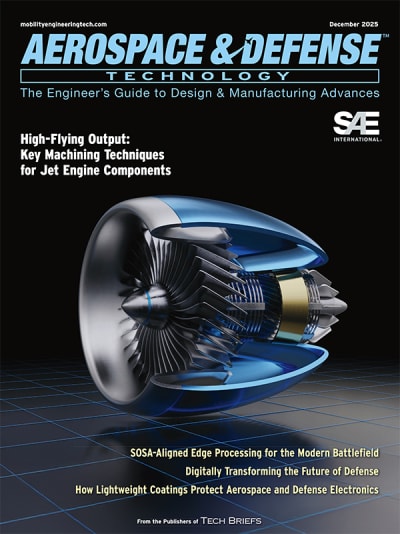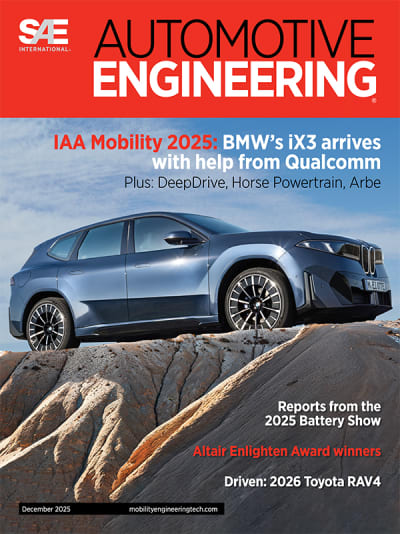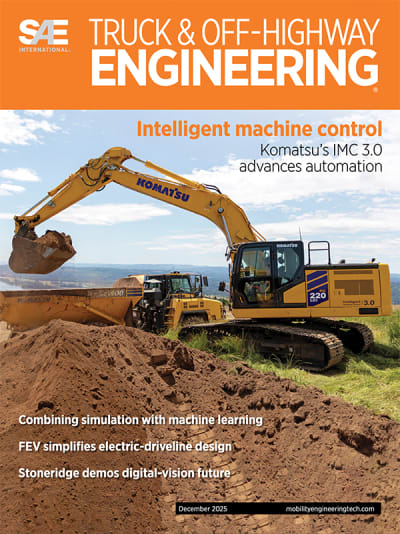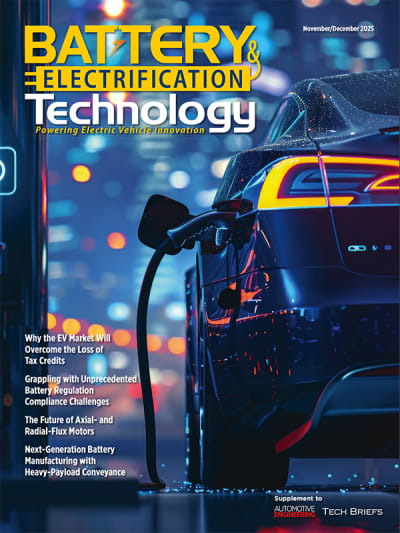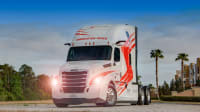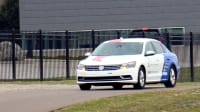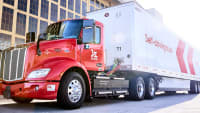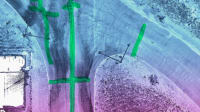2019 World Traffic Safety Symposium Focuses on AV Regulation
Federal agencies are sponsoring and providing grants for a variety of demonstration projects to help prep the transportation infrastructure for autonomy.

How should automated vehicles (AV) avoid erroneous traffic tickets? How can highway work zones be standardized to enable safe AV use? Are bridges structurally sound enough to support platoons of automated semi-trucks? These are among the key issues discussed at the recent 2019 World Traffic Safety Symposium held in New York.
While AV development takes place at vehicle OEMs, suppliers and tech companies, U.S. federal agencies do not want the transportation infrastructure to be caught by surprise. They’re sponsoring and providing grants for demonstration projects in an expanding variety of areas, explained Dr. Clayton Chen, roadway team leader at the Federal Highway Administration (FHA).
AV integration into the mobility ecosystem starts with SAE Levels 1 and 2, which are currently used in truck platooning tests, Dr. Chen explained. In platooning (above), a convoy of perhaps three to seven over-the-road semi-trucks operates in tight formation – gaps between each rig are typically less than 50 feet (15.2 m) – to improve overall drag and thus boost fuel economy.
Truck platooning safety
While highway platooning demonstration projects are being successfully performed in many parts of the U.S., the FHA raises concerns about the structural integrity of bridges when they are subjected to the repeated impact loads from platoons of big rigs. Dr. Chen questioned if bridges and other supported roads require new service and fatigue limits, and if upgraded design standards are required for new bridges.
Safe truck platooning also includes merging the convoy onto and off a highway, and how existing traffic lights and other controls should respond to it. Information is needed on how drivers in passenger vehicles will behave in sharing the road with automated truck convoys. Many car drivers will not be aware of the trucks’ operating modes (most will have human “safety drivers” in the cab at all times) and may consider those driving close behind to be “tailgating.”
Dr. Chen said the agency will remain “technology neutral” for all aspects of AV deployment, and will develop regulations on a pro-active basis. Indicative of the complexity of AV regulation, the U.S. Dept. of Transportation has noted that the ubiquitous roadway “work zone” must become a standardized “TTC zone” (temporary traffic control) with known advance notice, said Dr. Chen. Release of TTC zone dimensions will be necessary, so all types of vehicles, certainly AVs, can react appropriately when they approach a work area.
What’s your ODD?
Dr. Chen also discussed FHA development of three “voluntary” safety guidance documents for AVs. The DOT is presently on Version 3.0 – "Preparing for the Future of Transportation.” This announces a revision of the 2009 document covering “Uniform Traffic Control Devices,” to include connected and automated vehicle technologies in a public road network. It also may address potential issues with traffic safety cameras.
Both camera and vehicle must ensure an AV doesn’t inadvertently “get a ticket” as a result of a software conflict, which obviously would raise a number of legal issues, from “who’s responsible” and beyond. Version 3.0 follows the original “voluntary” guidance, the Federal Automated Vehicle Policy, begun in 2016. It called for each “highly-automated vehicle” (HAV) to have a safety assessment, including data recording and sharing, privacy and cybersecurity, crashworthiness/systems safety/post-crash behavior, and the HMI (human machine interface).
Each vehicle OEM also would have to stipulate the ODD--Operational Design Doman, which covers limitations on use, including geographic, type of roadway, speed, weather, day/night and minimum risk conditions. Version 2.0 “A Vision for Safety” was released in 2017. While it put the focus on SAE Level 3-5 operation (conditional, high and full autonomy), it also was clear that Levels 1 and 2 required regulatory development.
A plethora of new potential regs
One key takeaway from the Safety Symposium was that a complex matrix of technologies and regulatory agencies is already forming to meet the challenge of future multi-modal mobility that includes varying percentages of different types and levels of AVs. For example, the Federal Road Administration is beginning research to develop system requirements for how AVs should safely deal with railroad grade crossings – as well as details about the crossings themselves.
Anticipating even more possibilities, the Pipeline and Hazardous Materials Administration is researching the ability to provide technical help to First Responders before they arrive on an accident scene involving hazardous materials. It may be unlikely that an SAE Level 5 vehicle would be transporting hazardous materials without a human at the controls, but other scenarios would have to be covered.
The Maritime Administration and Federal Motor Carrier Safety Administration are investigating the possibility of automated truck line-ups, access, staging and parking at ports. And the Federal Transit Administration has a five-year research project (started in 2017) for possible deployment of fully automated bus services, not just the short-range shuttles currently being demonstrated.
Buckle up in the robocab
Experts at the New York safety symposium also discussed the need to vastly improve seat-belt-usage rates, in the new era of ride sharing and self-driving vehicles. While it might appear that the seat belt usage debate is almost over, with “click-it-or-ticket” laws and over 90% usage by drivers reported in surveys, Uber reports otherwise.
Dr. Nadia Anderson, the company’s global manager of public policy/traffic safety, told symposium audience that an Insurance Institute for Highway Safety study found that four of five adults may not fasten seat belts when sitting in the rear seats of taxis and ride-sharing vehicles. IIHS also found that overall belt use by ride-share and taxi passengers was only 57%.
In driverless vehicles, with no one behind the wheel to remind passengers, might the overall belt-buckling rate drop? Dr. Anderson said Uber is pursuing aggressive promotion of seat belt use in its app and with window stickers on its vehicles. It recently released a safety-related improvement for some areas that enables customers to use the company app to specifically book a vehicle that has a child safety seat, she added.
Top Stories
INSIDERRF & Microwave Electronics
![]() FAA to Replace Aging Network of Ground-Based Radars
FAA to Replace Aging Network of Ground-Based Radars
PodcastsDefense
![]() A New Additive Manufacturing Accelerator for the U.S. Navy in Guam
A New Additive Manufacturing Accelerator for the U.S. Navy in Guam
NewsSoftware
![]() Rewriting the Engineer’s Playbook: What OEMs Must Do to Spin the AI Flywheel
Rewriting the Engineer’s Playbook: What OEMs Must Do to Spin the AI Flywheel
Road ReadyPower
![]() 2026 Toyota RAV4 Review: All Hybrid, All the Time
2026 Toyota RAV4 Review: All Hybrid, All the Time
INSIDERDefense
![]() F-22 Pilot Controls Drone With Tablet
F-22 Pilot Controls Drone With Tablet
INSIDERRF & Microwave Electronics
![]() L3Harris Starts Low Rate Production Of New F-16 Viper Shield
L3Harris Starts Low Rate Production Of New F-16 Viper Shield
Webcasts
Energy
![]() Hydrogen Engines Are Heating Up for Heavy Duty
Hydrogen Engines Are Heating Up for Heavy Duty
Energy
![]() SAE Automotive Podcast: Solid-State Batteries
SAE Automotive Podcast: Solid-State Batteries
Power
![]() SAE Automotive Engineering Podcast: Additive Manufacturing
SAE Automotive Engineering Podcast: Additive Manufacturing
Aerospace
![]() A New Approach to Manufacturing Machine Connectivity for the Air Force
A New Approach to Manufacturing Machine Connectivity for the Air Force
Software
![]() Optimizing Production Processes with the Virtual Twin
Optimizing Production Processes with the Virtual Twin

